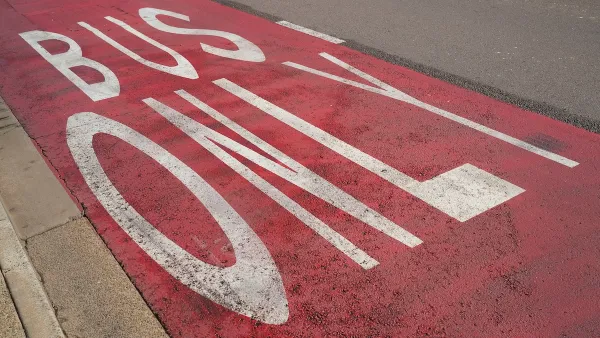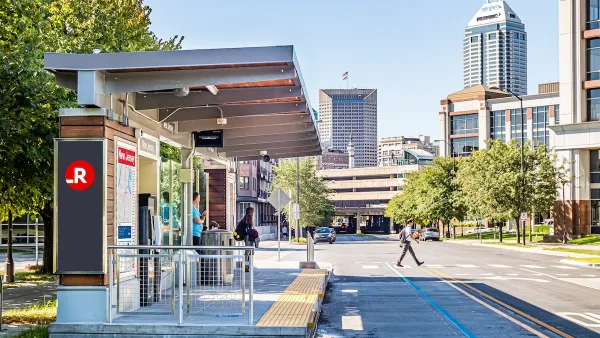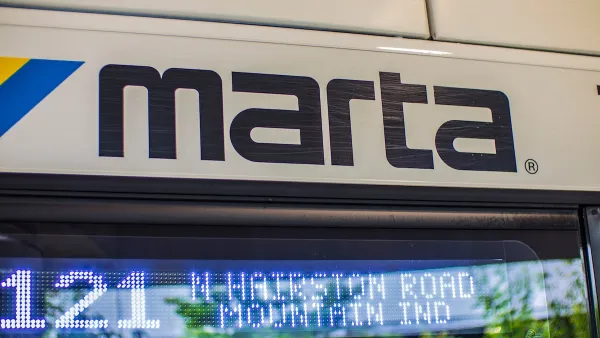The number of BRT systems in the U.S. continues to rise, with new lines opening in cities across the nation. But, a debate has arisen within the transit community over just how much should we rely on such systems.
Undoubtedly, cities around the United States are embracing bus rapid transit. Ryan Holeywell, of Governing magazine writes on the continued rise in popularity. "Until now, just a handful of U.S. transit agencies have embraced BRT," says Holeywell. "That's changing. Longtime transit leaders like Chicago, New York City and San Francisco are planning new BRT services, while less transit-focused places like Hartford, Conn.; Jacksonville, Fla.; and Montgomery County, Md., are pursuing it as well."
That popularity stems from the fact that many BRT lines are seeing increased patronage over that of regular bus lines. Additionally, as Holeywell writes, "[t]he other goal is to make buses feel safe and inviting. The exteriors of BRT buses often feature cosmetic enhancements to make them appear more modern. Stops are designed to be aesthetically pleasing and convenient, complete with landscaping and bicycle racks. And electronic displays let riders know how soon the next vehicle is coming."
Despite their increasing popularity, concerns remain for some in the transit community, stemming from what some see as an over-reliance on BRT. "Some in the light-rail community view BRT as a threat that actually undermines transit," writes the author. The conversion of travel and parking lanes to dedicated BRT lanes causes consternation with businesses and automobile drivers as well.
Still, undeniable is BRT's ability to help cash-strapped transportation agencies expand their offerings in a time when money for more expensive light rail and subway construction isn't readily available.
FULL STORY: Bus Rapid Transit Gaining Traction Despite Concerns

Analysis: Cybertruck Fatality Rate Far Exceeds That of Ford Pinto
The Tesla Cybertruck was recalled seven times last year.

National Parks Layoffs Will Cause Communities to Lose Billions
Thousands of essential park workers were laid off this week, just before the busy spring break season.

Retro-silient?: America’s First “Eco-burb,” The Woodlands Turns 50
A master-planned community north of Houston offers lessons on green infrastructure and resilient design, but falls short of its founder’s lofty affordability and walkability goals.

Test News Post 1
This is a summary

Analysis: Cybertruck Fatality Rate Far Exceeds That of Ford Pinto
The Tesla Cybertruck was recalled seven times last year.

Test News Headline 46
Test for the image on the front page.
Urban Design for Planners 1: Software Tools
This six-course series explores essential urban design concepts using open source software and equips planners with the tools they need to participate fully in the urban design process.
Planning for Universal Design
Learn the tools for implementing Universal Design in planning regulations.
EMC Planning Group, Inc.
Planetizen
Planetizen
Mpact (formerly Rail~Volution)
Great Falls Development Authority, Inc.
HUDs Office of Policy Development and Research
NYU Wagner Graduate School of Public Service




























